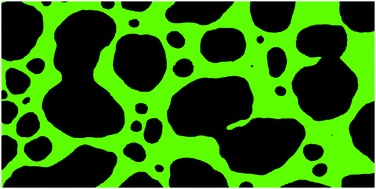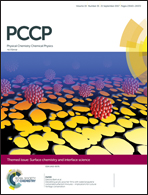Dewetting acrylic polymer films with water/propylene carbonate/surfactant mixtures – implications for cultural heritage conservation
Abstract
The removal of hydrophobic polymer films from surfaces is one of the top priorities of modern conservation science. Nanostructured fluids containing water, good solvents for polymers, either immiscible or partially miscible with water, and surfactants have been used in the last decade to achieve controlled removal. The dewetting of the polymer film is often an essential step to achieve efficient removal; however, the role of the surfactant throughout the process is yet to be fully understood. We report on the dewetting of a methacrylate/acrylate copolymer film induced by a ternary mixture of water, propylene carbonate (PC) and C9-11E6, a nonionic alcohol ethoxylate surfactant. The fluid microstructure was characterised through small angle X-ray scattering and the interactions between the film and water, water/PC and water/PC/C9-11E6, were monitored through confocal laser-scanning microscopy (CLSM) and analised both from a thermodynamic and a kinetic point of view. The presence of a surfactant is a prerequisite to induce dewetting of μm-thick films at room temperature, but it is not a thermodynamic driver. The amphiphile lowers the interfacial energy between the phases and favors the loss of adhesion of the polymer on glass, decreasing, in turn, the activation energy barrier, which can be overcome by the thermal fluctuations of polymer film stability, initiating the dewetting process.

- This article is part of the themed collections: 2017 PCCP HOT Articles and Surface chemistry and interface science


 Please wait while we load your content...
Please wait while we load your content...